How to be an Even Better Dad
The man who "re-fathers" after he's divorced—or as my dad did, rings the bell in the twilight of his wife's fertility—finds that fate has offered him life's ultimate mulligan. What can we learn from the wisdom of second fathers?By Marc ParentI was in college, so it's likely I was having a beer at the time, but I can't say for sure. What I do recall down to the precision of each second was the phone call I got that evening from my mother. It was shocking on many levels, because she was delivering news more typically conveyed by the son in college to his mother back home than from the mother back home to her college son. But rivers do run backward sometimes.
"I'm pregnant," she said. She let out a long exhale.
"Well..." I said, and then tried to lighten the moment. "I blame myself, Mom. I should have been more open with you and Dad about how these things can happen."
Nine months later, my father took my baby brother into his arms at the hospital with the smoothness of a pro, looked into his face with a reverence born of a long perspective, closed his eyes and smelled the top of his head, burped him, swaddled him, and rocked him to sleep. My younger brother was my Dad's last chance to slam-dunk fatherhood, and from onesies and applesauce to low riders and pepperoni sticks, slam-dunk is exactly what he did.
I'd never had the guts to ask him point-blank if he thought he was a better dad this last time around. I knew he wasn't the career-ladder-obsessed guy he'd been when I was born. He was a smarter, wiser, more-patient, more-involved, more-invested, more-all-around-indefatigable father for his younger son than he had been for his elder—better for my brother than he had been for me.
With my little brother, my dad entered into a realm that Martin Carnoy called "re-fathering" in his book
Fathers of a Certain Age. A father who gets divorced, remarries, and has children with a second wife finds himself in the same situation. Whether by default or by design, these men are in the rare position to make amends for prior failings, do the things they wish they'd done the first time around, avoid old mistakes, make good on old promises, and know from experience just how quickly the whole thing is over. The man who re-fathers after he's divorced or widowed—or as in the case of my dad, rings the bell in the twilight of his wife's fertility—finds that fate has offered him the ultimate mulligan on the most make-or-break tee of his life.
What does a re-father do with his second children that he wishes he'd done with his first? What does he know now that he didn't know then? How is he different this second time around? As the father of three young boys, I'm bound to look back once they're grown and have regrets, but is there something these second-timers could tell me (and all the other first-timers) that might tip the odds in our favor so that one day we'll be able to finally say we did right by our kids more often than we did wrong?
All Work and No Play Will Make You a Lonely GrandpaFrank Rigano had the experience of raising his first set of kids when work came first. At 63, he has two sons from a first marriage (Cliff, 31, and Craig, 26) and two from a second (Derek, 14, and Michael, 11). When Cliff and Craig were children, Rigano was a senior vice president of a management company; he doesn't mince words about his priorities at the time. "I was more focused on career than family," he says. "I allocated daily responsibility for the kids to my ex-wife. 'The woman brings them up; it's enough if I see them on weekends.' I was of that mentality."
It was a mentality that kept him largely absent from his sons' lives. A normal day on the job kept him out of the house from 7 in the morning to 6 at night; a normal week required him to be on the road 3 out of 5 days. I ask him if he was the kind of father young Cliff and Craig could come to when they needed help. "I always felt that way," he says, but then very honestly admits that he probably wasn't. "The reality of it was that I was away."
Years later, he found it difficult to bridge the chasm that had opened up between him and his first children—specifically, the 7 years spanning his marriage to and divorce from his second wife during which the boys refused to see him. Whenever he'd try to probe their feelings during this period, they would always deny there was anything bothering them. "No problem, Dad," Rigano says, recalling one of their typical brush-offs. "Everything's fine; just haven't had the chance to come see you in the past 7 years." This from sons who lived within a short drive. "Obviously something was very wrong," he says.
He was on the same road to estrangement from the children of his second marriage when his wife walked out and, 2 days later, he lost his job. Derek and Michael were 7 and 5 at the time. With no family to help out, he suddenly found himself, for the first time in his life, the full-time caretaker of his own children. He spent the next 4 months making sandwiches between job interviews, but the real shift was taking place between him and his sons. "I actually got to know them," he says, "and they got to know me"—a statement that is simultaneously dismaying and heartening when you consider that the boys had lived with the man their entire lives.
Rigano eventually secured new employment but found he could no longer stomach the time away. "Those 4 months changed me absolutely," he says. So Rigano did something with his second family that would have been inconceivable to him when he was raising his first: He quit his new demanding job to start his own business at the risk of—and this is the critical point—at the risk of making less money. (Hold on to your chairs, gentlemen; I'll buy the next round.)
"I started a small marketing-services company—an office with a couple of people working for me in New York," he says. As the owner of the business, he now has flexibility most guys could only dream of. "I leave for the office only after the kids have gone to school, and return home before they get back." So now that he's made the 180-degree flip, what message does the reformed 3-day-a-week road tripper have for his younger brethren racking up the supersized hours at the office? He laughs, because he can't say he would have listened to the advice of a guy who opted out of the big bucks to stay with his kids. But he tries anyway. "I would tell the guy who is hell-bent on pursuing his career and leaving the parenting of his kids to anybody else that he does not know what he's missing."
Rigano's not alone on this score. Bill Cox, a 58-year-old physician in Steamboat Springs, Colorado, claims that when he was raising his three kids from his first marriage, he spent his weekends working. He was in medical school when Julie, Kathryn, and Will, now 40, 36, and 33, were the same age as Claire, his 9-year-old daughter from his second marriage. Weekends with Claire revolve around horseback riding on their 3,000-acre ranch. He and Claire take rides every weekend. He says he uses the time with her for enjoyment, but also to talk with her about values and "infuse her with self-esteem."
More Barney, Less Great SantiniCarl Tomasello had a do-over as a father and took full advantage of the opportunity to make improvements in a very specific area: He raised his first children with a firm hand, his second with hugs and kisses. An antique-car enthusiast, Tomasello keeps a 1933 Ford Street Rod and a 1958 Thunderbird convertible. "Two ends of the spectrum," he tells me—like the ways he raised his kids. The senior vice president has two daughters from his first marriage of 18 years, Claudia, 35, and Christina, 33, who have given him five grandkids. His second marriage gave him Ryan, 15, and Emily, 12, who are "much more huggy-kissy at this stage in their lives than my first two were," he says.
Now 60, Tomasello views the difference as a result of his being more generous with affection this time around. "I'm more loving to them—more expressive about how I feel," he says of Ryan and Emily.
As a younger father to Claudia and Christina, Tomasello says, he didn't think about how important it was to get close with his daughters. He admits that at the time, he was operating out of the belief that intimacy happened exclusively between mothers and daughters. "I provided for them financially," he says. "I never thought I had to play a major role in raising them. I'd go to their plays, but their personal issues? That's a mom thing."
While he says he felt the same amount of affection for his first family as he feels for his second, he concedes there's a great difference in the amount of affection he has shown them. As a result, he postulates, Claudia is "more withdrawn" than he imagines Emily will be at the same age.
"Basic affection in the home at a young age sets the stage for how you relate to the rest of the world, for the rest of your life," he says. "An affectionate home creates a child who is more open to other people, more comfortable in every setting, more engaged in life." A lot of return for a few hugs and kisses, but probably good investment advice from an experienced broker who has seen the market go both ways.
Worry Less, Enjoy MoreForty-four-year-old Cody Hicks, vice president of an architectural consulting firm in New York City, is a prime example of the lengths some men will go to for a second chance. He has three children from his first marriage: Brian, 16, Connor, 11, and Elizabeth, 9. After his divorce, he made a conscious effort to date older women, who he assumed would be less interested in having children. Of course, life is a laugh riot, and Hicks ended up falling in love with a younger woman who had never had a child and wanted one very badly. He had to break the news early in their relationship that he'd had a vasectomy after his daughter's birth but assured her that once they were married, he would do "whatever it takes" to give her a child.
The operative words of that last sentence are "whatever it takes," and I'm not just talking about the surgery to reconnect his pipes. A long road of trial and error finally led the couple to a radical method—before each shot at conception, Hicks would wrap his balls in frozen peas (think: chilled sperm, lively; motivated sperm, bingo). His wife eventually gave birth to Jake, who is now 2 years old.
"I just want to do everything better," he says. "Mostly try not to get stressed by things. For example, Jake wasn't talking as early as his cousins were," he tells me, "so all of a sudden my wife is poring through every imaginable tome on every serious problem—every degree of autism, you know—freaking herself out. And I was just like, 'I have benchmarks to go by. I'm not worried.'"
As Hicks goes on about his wife's incessant ability to research the hell out of just about every potential childhood catastrophe, I have to admit that I'm able to relate more to her Chicken Little than to his hakuna matata attitude. I think about how much I would have appreciated benchmarks of any kind so that I wouldn't have had to spend quite so much time memorizing the height and weight charts and checking my sons' temperatures and could have spent more time just admiring them. Worry is the thing that robs the most from us on our first time around.
Establish RitualsWhile motherhood gently rises to a boil as women's bodies change over the course of their pregnancies, fatherhood comes on like a blast of dynamite. Women prepare; men react. One way to bring order to this newfound chaos is to schedule inviolable family time. Establish rituals early enough in your kids' lives, and they will be hard-pressed to blow them off in their teen years when you morph from Mufasa the Lion King to the quartermaster who doles out allowance and rides.
Alex Slogar, a 41-year-old software developer in Strongsville, Ohio, hasn't wasted any time with his second family establishing an "essential, unassailable" swim-and-pizza night every Friday. Slogar has one daughter from his first marriage, Sophie, 6, and one from his second, Gia, 17 months. Slogar is divorced from his second wife, as well. He has a week-on, week-off joint-custody arrangement with his ex-wives. As soon as Gia was old enough, he established the Friday outing.
A primary reason he's teaching Gia to swim at a younger age than he taught Sophie is that he regrets how much time he let his elder daughter spend in front of the television during her early childhood. He's far more encouraging of Gia to be physically active than he was with Sophie, whom he describes as "more emotional" than Gia. He believes Gia is more independent than Sophie because of that change.
Learn From Your Own ChildhoodThe "re-father" has in some ways an unfair advantage. He's had the time to analyze his own upbringing brick by brick, to keep what fits and toss what doesn't. Nothing better signifies a man's arrival into adulthood, and by the same measure fatherhood. So the older father is much more likely to be raising children by his own design than the younger father, who may only be (unwittingly, damn it, unwittingly) playing the doppelganger of his own dad.
A recent study from the Wright Institute Graduate School of Psychology, in Berkeley, California, concludes that one of the most significant differences between younger and older dads is the stated desire of the latter to "develop a relationship with their children that was different from the one they experienced with their own fathers."
And so on a Saturday morning, I clear my desk of all the notes I've made about other people's fathers so that I can lay out a sheet of paper, uncap my pen, and call my own.
You had to know I would eventually do this. My dad answers the phone and is happy it's me on the other end. I say I have a question—a sort of warning shot, now that I think about it.
He responds with an appropriately suspicious "Okay?" I start out easy.
"Were you a different father to your older son," I ask as if I'm inquiring about someone other than myself, "than you were to your younger?"
"I'm sure I was," he says.
"A better father?" I ask. He thinks about the answer, and because he is a great father today regardless of whether he was one in the past, he doesn't question my motives. I could just as easily be asking for his advice on fertilizer.
"I was in my 20s when I had you; my 40s when I had your brother," he says, thinking out loud.
"And so?"
"Well, the older father is a wounded and transformed animal who brings more to the table than the younger father."
Okay, that's very nice actually, but we're talking too generally. It's up to me, then. I edge my toes over the end of the board and jump.
"Dad, what did you know when raising my younger brother that you wish you'd have known when raising me?" The question, so easy to ask other men, feels accusatory when posed to my own father. I wait for him to close up, but he doesn't flinch.
"I was too rigid with you," he says. "Too controlling. I didn't trust you enough. I didn't let you know you were a great kid." Well, why don't you tell me how you really feel, I think. Honesty has never been a problem for my dad.
Every statement hits a little harder than he means it to. I think about changing the topic of conversation to ladders. "It was my own insecurity," he continues. "I didn't know what I was doing as a father, so I had to fabricate a box to stay within. Even when it was the wrong box. I always thought you were terrific, but I didn't tell you that as much as I told your brother."
I point out that my brother is hands down more terrific than I was at his age. "Absolutely, but not in the way I'm talking about," Dad says. "I mean terrific like when you look at your kids sleeping in their beds. You watch them and you think about how terrific they are, not because of anything they're doing or the consequences of their success or failure. They're terrific just lying there."
"Default terrific."
"Every kid. Exactly."
"Some kids are more terrific than others, though," I say. "Like my brother." He tells me that he couldn't disagree more but doesn't expect me to fully understand at my age.
"You know, life gets quieter as you grow older. It's easier to catch the terrific in things," he says.
My dad and all the other dads I spoke with for this piece were in unison about the big things they're trying to do better on their second time around: spend more time with their kids, be more patient, and get angry less.
Not one of them mentioned taking the kids skiing more often, buying them better toys, or putting them into a bigger house or a better car. It's only human nature to want shortcuts and magic pills, and if I was looking for those here, I found out only that they don't exist. What I did discover is that becoming a great father is no different in its simplicity (and perhaps no less elusive) than any other lifelong pursuit.
If you want to lose weight, you have to eat less; if you want to live longer, you have to exercise more; and if you want to be a great father, you have to give your children time—piles of it, more than you have. Do your best. You have to show them patience—piles of it, more than you have. Do your best. And while you work on those two, you should try whenever humanly possible to keep your voice down. Do your best.



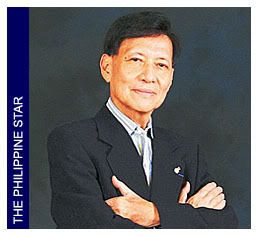 Max V. Soliven strikes a pose at The STAR’s 20th anniversary last July.
Max V. Soliven strikes a pose at The STAR’s 20th anniversary last July. A young deer struggles to free itself from a plastic jack-o'-lantern on Nov. 6 in Cascade Township, Mich. The animal finally freed itself on Saturday, officials said.
A young deer struggles to free itself from a plastic jack-o'-lantern on Nov. 6 in Cascade Township, Mich. The animal finally freed itself on Saturday, officials said.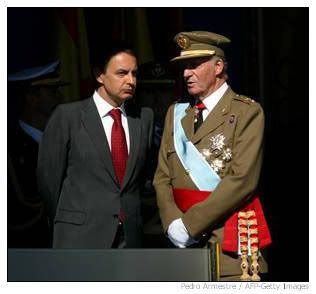 Spain's King Juan Carlos, right, chats with Prime Minister Jose Luis Rodriguez Zapatero on Oct. 12 during a military parade in Madrid.
Spain's King Juan Carlos, right, chats with Prime Minister Jose Luis Rodriguez Zapatero on Oct. 12 during a military parade in Madrid.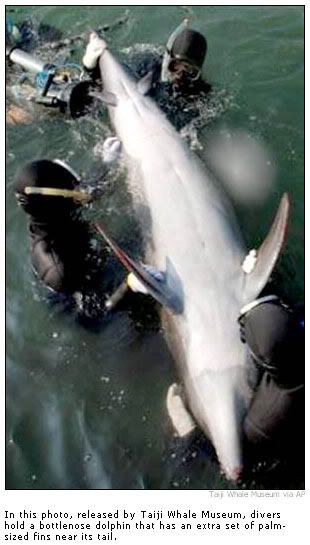 TOKYO - Japanese researchers said Sunday that a bottlenose dolphin captured last month has an extra set of fins that could be the remains of hind legs, a discovery that may provide further evidence that ocean-dwelling mammals once lived on land.
TOKYO - Japanese researchers said Sunday that a bottlenose dolphin captured last month has an extra set of fins that could be the remains of hind legs, a discovery that may provide further evidence that ocean-dwelling mammals once lived on land.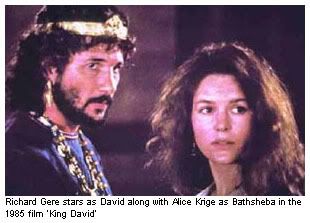 JERUSALEM – An international foundation is seeking to gather Jewish descendants of King David, the second biblical king of Israel, for a reunion next year in Jerusalem aimed at fostering Jewish unity.
JERUSALEM – An international foundation is seeking to gather Jewish descendants of King David, the second biblical king of Israel, for a reunion next year in Jerusalem aimed at fostering Jewish unity.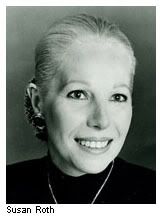 "At this critical time when Israel faces existential dangers that deny Jews have an eternal right to our homeland, we must restore our glorious pride as a nation and say that we will not allow Israel to be destroyed," said Roth.
"At this critical time when Israel faces existential dangers that deny Jews have an eternal right to our homeland, we must restore our glorious pride as a nation and say that we will not allow Israel to be destroyed," said Roth.